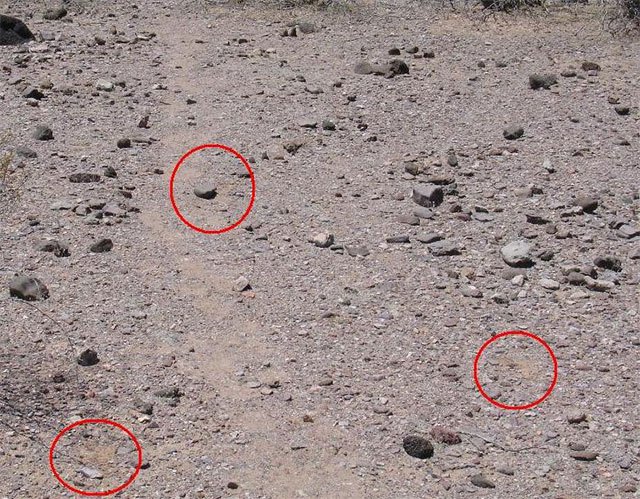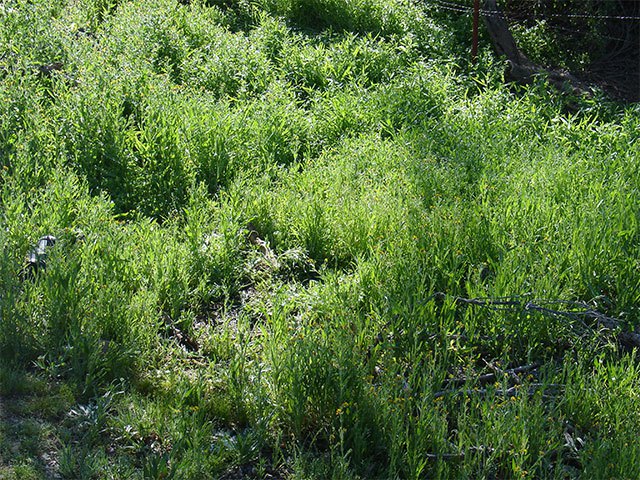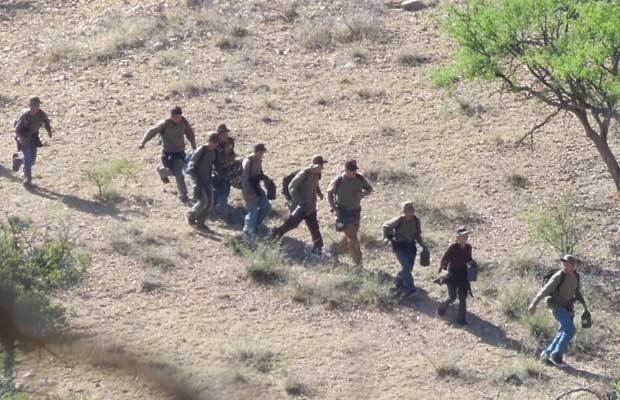
Introduction
There may be a time in your future when it becomes necessary to evade detection while on foot and on the move. If SHTF forces you to strike out cross-country, or to abandon your vehicles at some point, you will be leaving a trail of your route with every step that you take. The more people there are in your group, the ‘brighter’ that trail will be.
I’m not referring to concealment while in camp or at a lay up site. Instead, this series will focus on two things:
- Developing an awareness of the sort of activities that reveal your presence on a trail, and
- Techniques that will hamper the ability of someone to track you while moving through various types of terrain.
Effective application will, at minimum, slow down tracking efforts of a group behind you. The less aware they are of your presence, the safer you will be. If a group is aware of you, but cannot pin down your route, they may abandon efforts to locate and overtake you.
The Risks
There are numerous reasons for being concerned about tracks that you or your group may leave:
- Other groups may very well be taking the same route, even if only temporarily, to reach their destination.
- Your rate of travel will be determined by the capabilities of your group. That is, you will be moving at the speed of the slowest individual.
- Health and stamina issues may force more frequent rest breaks than you anticipated.
- Security risks that are in front of you may force frequent breaks in travel.
- Any group in trail of you may be traveling at a higher rate of speed.
- You will not know the size, capabilities or intentions of a trailing group.
- Bandits may be working in your area. At some point, this may become inevitable. They will be on the hunt for vulnerable groups. If they pick up your trail you may become their next target.
- You can be tracked at night.
- You may be in trail of group whose size, condition and capabilities are unknown. Information contained in this article can provide tools to help you assess some of that group’s composition and potential threat level. That knowledge will help you determine whether you can risk overtaking a group, or if you need to find a different route.
Before we launch into the techniques for covering your tracks, I suggest that you take a few minutes to watch the following collection of videos. They are linked so that one will play after the other. Pay particular attention to the one titled “Raw Footage Arivaca April May 2014.”
Apart from gaining an exposure to what goes on in the borderlands (that you may not have been aware of), this collection of video clips from hidden cameras is extraordinarily instructive in the ways smuggling groups move in terrain they effectively control, as well as areas where they are at heightened risk detection. If the route bears significant risk, or if it is being repeatedly used over a period of time, efforts will be taken to obscure tracks.
Five Types of ‘Sign’
Tracking skills require more than the ability to recognize a footprint. It involves the detection and interpretation of visual evidence on the ground, as well as above it. Basically, there are five types of sign (evidence) that a tracker will be looking for. Someone else might categorize them a little differently, but I have organized them in a way that allows you to think about evidence that you deposit on a trail and what you can do to avoid or mitigate it. Think of these categories as ‘calling cards’ that you may unwittingly leave behind as you move along your route.
1. Footprints
A comprehensive discussion of soil types and terrain conditions that allow the detection of tracks is far beyond the scope of this article. Suffice it to say that most surfaces will reveal the passing of foot traffic to a greater or lesser degree. Even a boulder will show signs of your passage if you deposit a muddy boot print on it. The durability and clarity of the impression are affected by many issues, including soil composition, material that is on top of the soil, moisture and wind.
The imprint of a shoe sole reveals many important things about you and the group you are traveling with, including whether you are carrying heavy packs and whether there are women and children in the group. Tracks will also reveal whether you are walking casually, hurriedly, or if you are running. They will tell an experienced tracker that you are attempting to keep each step inside the footprint ahead of you or even that you are walking backward in an effort to mislead your direction of travel. Finally, your tracks may reveal that your group is not equipped to go the distance: highly worn tread, holes in the shoe, or the divot from a walking stick are good examples.
The sole of your shoe is a signature
Experienced trackers use tread recognition to single out one or two patterns when they are ‘cutting sign.’ They will alert others along a known or suspected route to the details of the tread, such as a ‘running W,’ concentric circle, cross trainer or lug pattern, to see if they appear farther up the trail. This helps confirm the course and direction of a group and enables trackers to leap-frog, or ‘cut ahead,’ so that they can close in on the group.
If a group is behind you and tracking, they may not be experts, but the continued sighting of any particular tread pattern will confirm that they are on your trail.
The number of tracks indicates group size
In a group of any size, the length of each person’s stride will vary. For example, the stride of a nine-year old child will not be the same as that of a six-foot tall adult male. A reasonably experienced tracker in trail of you will be able to develop a pretty accurate “soft count” your group size after only one or two hundred yards; often less. Determination will be based upon the variations in stride, range of tread types and foot size. The effort will be greatly simplified if your group does not maintain a narrow, single file column.
The size of the tracks indicate the group’s composition
Even if everyone in your group is wearing an identical brand of shoe, variations in foot size will reveal the number of children, juveniles and adults that comprise your group. In combination, the foot size and tread pattern can reveal that there are females.
Tread detail is an indicator of freshness
Full and partial tracks that are laid in a variety of soil types can retain a very sharp impression. Without an excessive amount of moisture or wind, those tracks can survive for weeks. Accurately interpreting the relative freshness (hours versus days) is a learned skill that you can practice at home and on weekend outings. Nevertheless, good observation can help pin down the age of a track. For example, let’s say that you started out with a dry day, but it rained for about a half-hour at noon. A tracker behind you will have waited out the same rain shower. If he sees your still moist tracks at 3:00 that afternoon he will know that you are no more than two and a half hours ahead. Your ‘gift’ has just lowered the skill requirements of a tracker from expert level to that of simple observation and rudimentary reasoning.
Freshly turned rubble and scuffs on the trail
Trackers will also look for freshly turned rubble and displaced pebbles. Simply stated, an overturned or displaced rock or pebble will leave a surface scuff or small hole in the soil that matches the size and shape of the rock. The rock will likely have a different color on the bottom than the side that was facing upward. The color of the soil in the hole may be different from the color on the surface.
This photo shows two scuff locations and a displaced rock. The group that left these sign moved on the trail at night. Apart from the obvious tracks, what else does the photo tell you?
General characterizations can be made of groups that leave these types of sign. For example, one or more of the following may apply:
- Moving at night
- Hurried – Being pushed from behind by trackers
- Experiencing fatigue, or
- The group has poor trail discipline
Bent grass
Bent grass can reveal a distinct trail of a group when moving in single file. This photo shows two distinct trails and a spot where people were standing while in the cover of trees and brush.
Tracks that are laid through wild grasses and other ground covers will be bent over by the pressure of passing foot traffic. Repeated, (single file) traffic will bruise the grasses, breaking the stalks near the ground. Although green grasses that have not been excessively bruised will return to an upright stance over time, recovery is not immediate. Dead, (especially desiccated), plants are easily crushed and fragmented. They will indicate a course of travel, even in the absence of a distinct foot print.
Methods to mitigate bent grass will be discussed in Part Three of the article. Other than natural forces (wind or rain), there is no practical remediation for crushed, desiccated plants that I know of.
Skids
Did you ever slide down a hill after stepping on loose pine needles, or had the soil on a steep bank break loose under your foot while you were climbing up an embankment? These are the type of skid marks I’m referring to. They can easily mark the location where you break from a trail for rest, or when changing course. Remediation is difficult, especially if you are in a hurry. Methods to avoid or limit skid marks will be discussed in Part Three.
Moon dust
This type of soil can be figuratively compared to dry talcum powder. Tracks laid in moon dust will leave a particularly sharp impression, although windy conditions will quickly erase the details. The arid Western region of the U.S. and areas that are experiencing drought will produce these conditions. Be alert to and avoid trails that take you through powdery soil.
Desert pavement
Many lower elevations in the Southwest (particularly if they are alluvial) may have a thin, fragile covering that is referred to as “desert pavement.” It is usually comprised of very small pebbles overlaying a thin, equally fragile surface crust. The pebbles are frequently coated with a thin patina (varnish) of minerals, making it reddish to dark brown in appearance. Walking across desert pavement will dislocate the small surface pebbles, and your weight will break through the thin crust.
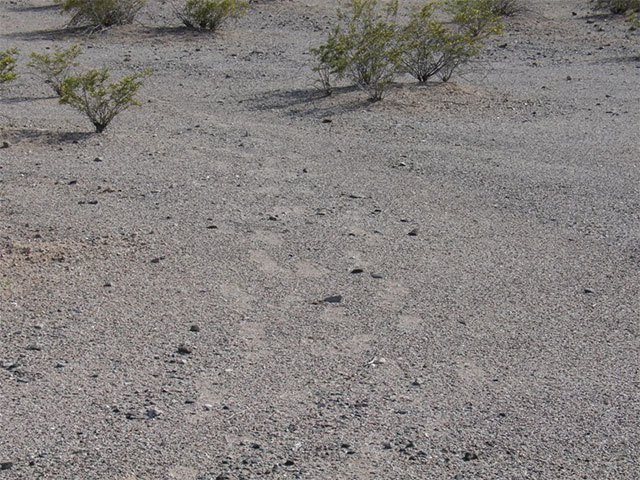
Tracks on Desert Pavement
In the photo above a smuggling group crossed a large area of desert pavement at night; leaving the very visible trail that you see. If you create a trail across this type of soil there will be nothing you can do to mask it. Attempts to do so will only make the trail more obvious. The solution is to detour around desert pavement.
I am not familiar with soil surface conditions in other regions of the country. I mention desert pavement only because it may alert you to soil types or surface conditions that warrant similar precautions where you live.
Windblown tracks
The movement of air, (breezes and wind), can dry out surface soil very quickly. Depending on the soil type, rapid drying may preserve a sharp image of tread. Trackers will look for tread imprints that may have bits of sand or plant debris on the trailing edge of the imprint (relative to the prevailing direction of the wind). On other soil types, windy conditions may obscure or erase tracks entirely on exposed terrain over a period of time. These clues can help determine the age of the tracks.
Burlap, booties and carpet
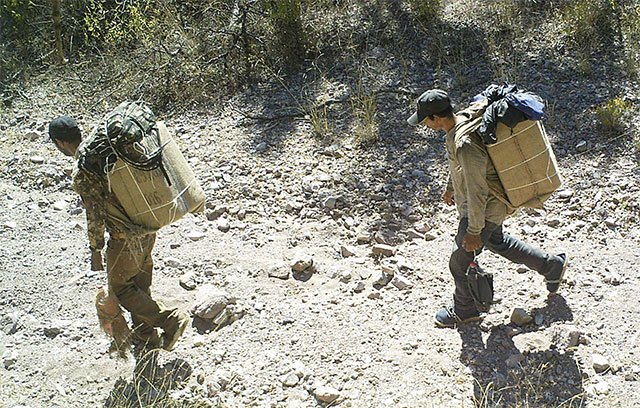
These drug packers are wearing carpet shoes in a rocky dry wash.
If you have watched the videos referenced at the beginning of the article you will have seen many smuggling groups that were wearing various types of covering over the soles of their shoes. The videos show individuals with layers of burlap wrapped and tied around their shoes, as well as “carpet walkers” and foot coverings, known as “booties,” made of thinner material, such as felt. To varying degrees, these obfuscation efforts work. It can take an experienced tracker to recognize a trail where these methods have been employed, and it will likely take an expert to successfully locate a group on carpet in rough, rocky terrain.
At its most fundamental level, the purpose of these obfuscation methods is to make it more difficult to spot tracks and to deny a tracker the ability to identify a specific footprint. This does not mean, however, that the methods are equally effective across all terrain, or that they have equal durability. All three types merit some discussion.
Burlap is frequently used on dry hard packed soil and in dry sandy washes. On damp soil the rough burlap material can leave an impression of the fabric weave. Several layers of burlap will be wrapped around the shoe and then tightly tied with cordage. Once the burlap begins to break down from wear, strands of thread can be found lying on the surface. If the cordage unravels, a portion of the shoe tread may become exposed, leaving a direct imprint in the soil. Trackers will look for evidence of shredding.
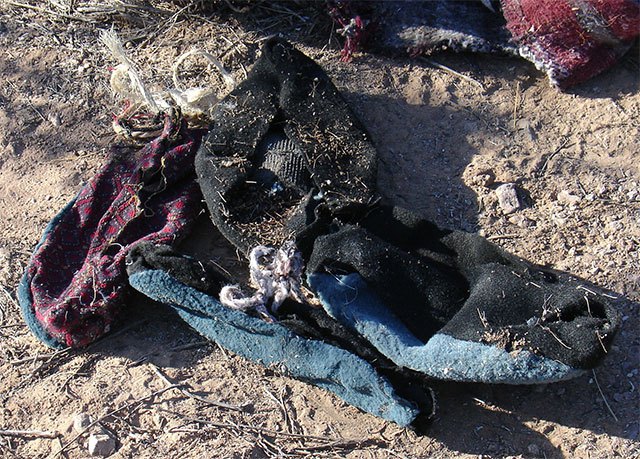
Felt booties are effective on many types of soil, but are not the most durable method for concealing tracks.
Booties are designed to slip over a shoe and are usually constructed using a relatively thin synthetic material. The bottom may be constructed of one or two layers of material. They are primarily intended for covering lightweight walking or jogging shoes that do not have aggressive treads. Durability of the fabric is only marginally greater than the same thickness of burlap. Booties do not break down in the same way that burlap does. They don’t shred per se, but large holes can develop, allowing a major portion of the tread to make contact with the ground. The best application for booties is smooth, hard packed surfaces.
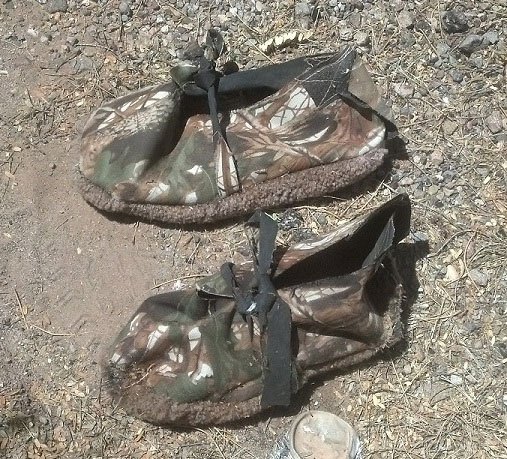
Carpet shoes have a bottom made from pile carpet sewn to a durable upper material. This pair has Velcro straps that secure around the heel.
Carpet shoes are constructed using a cut to size piece of carpet that is usually sewn to an upper portion made from durable cloth. The carpet portion is typically a pile type of synthetic material. Higher quality shoes will have a denser and thicker material. Some carpet shoes fully enclose the heel, while others may be open at the heel or use Velcro straps. In some cases, the carpet may be strapped over the top of the foot to make it more secure. Open heeled carpet shoes can be put on very quickly when circumstances require their use, but can slip off if the person is running. Well constructed carpet shoes are the most durable of the three types. Carpet can be used on virtually any soil type and, in general, is the most effective method of obfuscating tracks. In addition to preventing an impression of the shoe tread, it can reduce the overall print impact on softer soils.
It is important to note that these obfuscation methods are generally not used on steep, bare rock surfaces (especially when wet) where traction is needed for safety. Booties and carpet are usually removed when a group moves from soil conditions to terrain that is mostly rock.
We will continue the discussion of the remaining four types of trail sign in Part Two. If you have questions in the mean time, drop me a note to ensure that I address it directly, or in a subsequent article segment.



